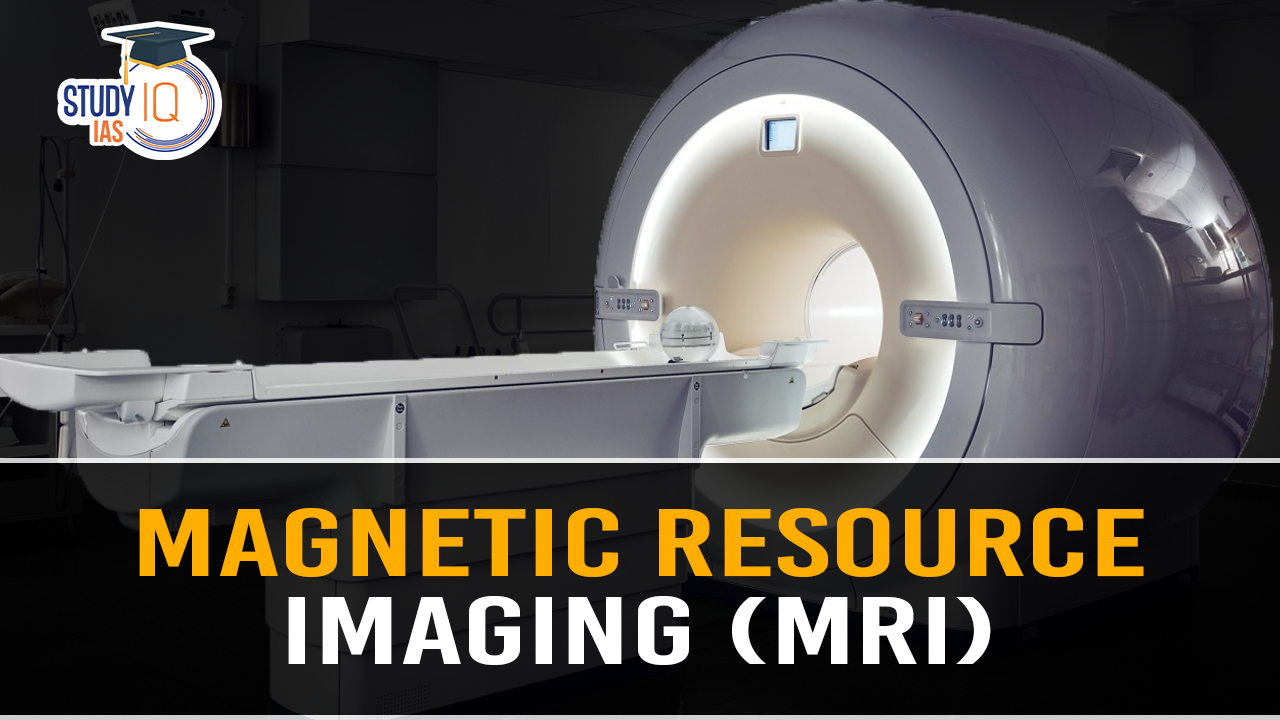Table of Contents
Context: A team at the University of Hong Kong, led by Ed Wu, has developed a low-cost MRI scanner that could significantly improve access to this crucial diagnostic tool, particularly in low- and middle-income countries.
About the Discovery of low-cost MRI Scanner
- Cost Reduction: The new scanner costs around $22,000 (Rs 18.4 lakh), making it about 50 times cheaper than conventional 3-T MRI machines that can cost up to Rs 13 crore.
- Simplified Design: The machine uses 0.05 T magnets, eliminating the need for shielded rooms and helium coolant. It can be plugged into standard wall outlets.
- AI-Enhanced Imaging: A deep-learning algorithm compensates for the lower resolution of 0.05 T magnets by reducing noise and sharpening images.
- Proven Efficacy: The scanner produced clear images of various organs and tissues in 30 healthy volunteers, comparable to those from 3-T machines.
Magnetic Resource Imaging (MRI): An Overview
What is it?
- MRI is a non-invasive imaging technique used to visualise soft tissues within the body (brain, muscles, organs, etc.).
- It’s vital for diagnosing and monitoring cancer, neurological conditions, and more.
How does it work?
- MRI utilises the magnetic properties of hydrogen atoms in the body to create detailed images of soft tissues.
- The machine consists of a superconducting magnet, a device emitting radiofrequency pulses, and a detector.
- Hydrogen atoms align with the magnetic field
- Radio pulses excite these atoms, and their energy emission upon returning to a lower energy state is detected to form images.
| Facts |
|
Pros of MRI
- MRI is non-invasive and capable of imaging various body parts including the brain, cardiovascular system, and joints.
- It is particularly useful for diagnosing conditions like cancer and neurological disorders.
- The machine can produce detailed images from multiple angles without requiring patient movement, using gradient magnets.
- MRI exploits differences in T1 relaxation times of hydrogen in water across different tissues, enhanced by contrast agents for clearer imaging.
- It is considered safe as the magnetic fields do not have long-term effects on the body, although effects on pregnant women are less studied.
Cons of MRI
- High costs: MRI machines are expensive, ranging from tens of lakhs to crores of rupees, making scans costly (often over ₹10,000 each in India).
- Physical discomfort and potential issues for claustrophobic patients due to the need to remain still in a confined space during the scan.
- Maintenance and operational costs are high due to the energy-intensive process needed to generate and maintain the strong magnetic fields.
Advantages of the Low-Cost MRI Scanner
- Accessibility and Cost: Drastically reduces the financial barrier to medical imaging, particularly beneficial in low- and middle-income countries.
- For instance: Conventional MRI scans can cost Rs 7,000-15,000, with waiting times of several months for cheaper options.
- Portability and Ease of Use: Lightweight and portable, requiring no special power sources, which makes it suitable for remote or underserved areas.
- Safety and Usability: Generates less noise, which could be advantageous when scanning children, and poses less risk of attracting metal objects, reducing accidents commonly associated with high-field MRI scanners.
Medical and Emergency Applications
- Immediate Medical Assessment: Useful in emergencies for quick diagnostics to aid first responders and in traumatic accidents to assess injuries on-site.
- Compatibility with Metal Implants: Produces fewer artefacts from metal implants, potentially leading to better diagnosis and less risk during scans.
Limitations and Ongoing Development
- Resolution and Utility: While low-field magnets do not provide the same resolution as high-field magnets, they are still valuable in certain contexts.
- Further Testing Needed: The necessity for additional testing in other centres to validate the findings and explore the compatibility with devices like pacemakers.
Potential Impact and Future Prospects
- Complementary Use: Can complement existing high-field MRI machines in radiology departments, offering a balance between cost and functionality.
- Healthcare Accessibility: Could revolutionise healthcare delivery by making essential diagnostic tools more accessible and affordable.


 SSC MTS Salary 2025, Check Highest Salar...
SSC MTS Salary 2025, Check Highest Salar...
 F-35 Fighter Jet Stranded in Kerala: Dis...
F-35 Fighter Jet Stranded in Kerala: Dis...
 Quad Summit 2025: Key Announcements, Str...
Quad Summit 2025: Key Announcements, Str...





















